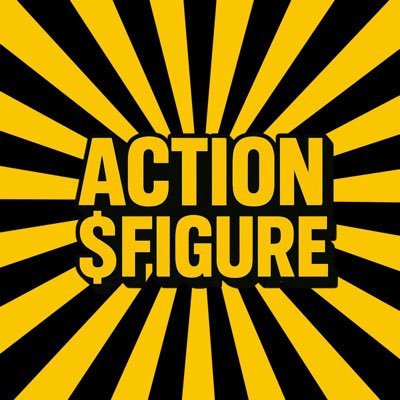Solana: A New Era of High-Speed Blockchain
---
Introduction
As the blockchain industry evolved beyond Bitcoin and Ethereum, developers began facing a recurring problem: blockchains were either fast or decentralized—but rarely both. That’s where Solana comes in—a network designed to offer speed, scalability, and cost-efficiency, without sacrificing decentralization.
Founded by Anatoly Yakovenko, a former Qualcomm engineer, Solana was built from the ground up with a novel design that aimed to fix the "blockchain trilemma" (scalability, security, decentralization).
---
The Vision Behind Solana
Yakovenko’s experience in distributed systems and telecommunications helped him recognize a gap in blockchain infrastructure: most chains waste time agreeing on the timing of events. His breakthrough idea was Proof of History (PoH)—a way to encode time itself into the blockchain, so everyone can agree on the order of transactions without having to talk to each other constantly.
This was the seed of what became Solana.
---
How Solana Works
Solana combines Proof of History (PoH) with Proof of Stake (PoS) to achieve consensus. Here’s a breakdown:
1. Proof of History (PoH)
PoH is a timestamping mechanism that creates a verifiable timeline of events. It acts like a synchronized clock for the entire network.
Speeds up consensus by letting validators process transactions independently and in parallel.
Eliminates the need for constant validator communication to agree on order.
2. Tower BFT (Byzantine Fault Tolerance)
Solana's version of BFT uses PoH as a reference, allowing nodes to vote on valid blocks with minimal delay.
3. Parallel Processing
Solana’s Sealevel engine allows smart contracts to run in parallel, rather than sequentially like in Ethereum. This massively boosts throughput.
4. Efficient Data Sharing
Protocols like Gulf Stream, Turbine, and Archivers ensure fast block propagation, low latency, and decentralized storage.
---
Speed and Performance
Transactions per second (TPS): Over 65,000 in theory, with real-world speeds often exceeding 3,000 TPS.
Block time: ~400 milliseconds.
Average fees: Less than $0.001 per transaction.
These metrics make Solana one of the fastest and cheapest chains currently available.
---
What Can You Build on Solana?
The Solana blockchain supports a vast ecosystem, including:
1. DeFi (Decentralized Finance)
Solana hosts DEXs, lending protocols, and liquid staking platforms:
Orca, Meteora, MarginFi, and Jito are popular apps.
Its architecture supports fast trading and low slippage.
2. NFTs and Digital Art
Solana has a flourishing NFT community. Collections like Okay Bears, DeGods, and Mad Lads gained significant traction.
Marketplaces: Magic Eden, Tensor, Solsea
3. Gaming
With zero-lag gameplay and scalable infrastructure, Solana powers games like:
Aurory
Star Atlas
Mini Royale: Nations
4. Social and Web3 Apps
Solana is pushing into decentralized social with tools like Dialect (messaging) and Backpack (wallet and identity hub).
---
Solana’s Token: SOL
Symbol: SOL
Functionality:
Pay gas fees
Stake to secure the network
Vote on proposals (in future updates)
Staking: SOL holders can delegate their tokens to validators and earn ~5–8% APY.
---
Notable Innovations and Projects
Firedancer (Coming Soon)
An independent validator client built by Jump Crypto to improve performance and reduce downtime. Expected to 10x Solana’s throughput.
Solana Mobile
With the launch of the Saga phone and Solana Mobile Stack (SMS), Solana is pioneering mobile-first Web3 experiences.
Solana Pay
An open-source protocol enabling instant, gasless payments using SOL or USDC—useful for both online and real-world retail.
---
The Challenges
While Solana is fast and efficient, it’s had its fair share of issues:
Network Outages: There have been several halts due to bugs or validator overload.
Centralization Fears: Critics argue that many Solana nodes are operated by large validators or institutions.
Developer Experience: Though improving, Solana development is more complex than Ethereum, with Rust and C++ being the primary languages.
---
Community and Ecosystem
Despite challenges, Solana has a strong and growing community of developers, artists, gamers, and crypto enthusiasts. Hackathons, DAO tools, educational resources, and global conferences (like Breakpoint) fuel its ecosystem.
---
Conclusion: Why Solana Matters
Solana is more than just another blockchain—it’s an attempt to reimagine what a blockchain can be when designed from first principles. With blazing speed, ultra-low fees, and a vibrant ecosystem, Solana is positioning itself as the foundation for the next generation of decentralized apps.
If the team can resolve stability issues and maintain decentralization, Solana could be a major player in the future of Web3, rivaling even Ethereum in user adoption and utility.
$SOL
---
What is Solana?
Solana is a high-performance, open-source blockchain platform designed to support decentralized applications (dApps) and crypto projects. Launched in March 2020 by Solana Labs, it was created to address scalability issues that plague earlier blockchains like Ethereum and Bitcoin.
---
Key Features of Solana
1. High Throughput:
Solana can process up to 65,000 transactions per second (TPS) without sacrificing decentralization.
It achieves this speed using a unique consensus mechanism called Proof of History (PoH).
2. Proof of History (PoH):
This is a timestamping mechanism that enables nodes to agree on the time and order of events without needing to communicate constantly.
It enhances efficiency and helps in faster validation.
3. Low Transaction Costs:
Transaction fees on Solana are typically fractions of a cent, making it ideal for micro-transactions and large-scale apps.
4. Scalability:
Unlike Ethereum, which relies on Layer 2 solutions to scale, Solana is scalable at Layer 1—meaning it's built into the core blockchain.
5. Smart Contracts and dApps:
Solana supports smart contracts and allows developers to build fast and low-cost dApps, particularly in DeFi, NFTs, and gaming.
---
Ecosystem and Use Cases
DeFi: Platforms like Serum, Raydium, Orca are built on Solana.
NFTs: Solana has become a home for many NFT projects with marketplaces like Magic Eden.
Gaming: Web3 games such as Star Atlas leverage Solana for speed and low fees.
Payments: Some merchants and apps use Solana for near-instant payments.
---
SOL Token
The native cryptocurrency of the Solana network is called SOL.
Utility:
Used to pay transaction fees.
Staked to secure the network and earn rewards.
Used in governance proposals in the future.
---
Advantages of Solana
Ultra-fast transaction processing.
Very low fees.
High scalability without relying on additional layers.
Growing and active developer community.
---
Challenges and Criticisms
Network outages: Solana has faced several downtime issues, causing concerns over reliability.
Centralization concerns: Due to the number of validator nodes and some control by Solana Labs, critics argue it's less decentralized than Ethereum.
Competition: Faces strong competition from Ethereum, Avalanche, and newer L1 chains.
---
Recent Developments (as of 2025)
Solana has been increasingly integrated with AI, real-world assets, and mobile platforms (e.g., Saga phone).
Adoption is growing with institutional interest and cross-chain collaborations.
Its Layer 1 dominance continues to grow in sectors like DePIN (decentralized physical infrastructure networks).
---
Conclusion
Solana is a powerful blockchain platform that offers high speed, low costs, and scalability—making it attractive for both developers and users. While it has faced its share of challenges, its rapid growth, vibrant ecosystem, and ongoing improvements keep it among the top contenders in the crypto space.$SOL
What is Solana?
Solana is a high-performance, decentralized blockchain designed for scalability and speed without compromising security or decentralization. It supports smart contracts, decentralized applications (dApps), and crypto assets. Solana was founded in 2017 by Anatoly Yakovenko, a former Qualcomm engineer, and officially launched its mainnet in March 2020.
Its core advantage lies in its ability to process thousands of transactions per second (TPS) at extremely low cost, making it a top contender for building scalable Web3 applications.
---
Key Features of Solana
1. High Throughput and Scalability
Solana is capable of processing 65,000+ TPS, compared to Ethereum’s 15-30 TPS in its earlier version.
This scalability is achieved without using Layer 2 solutions, thanks to its innovative architecture.
2. Low Transaction Fees
Average fees are typically less than $0.01, making it ideal for micro-transactions, DeFi, and gaming.
3. Proof of History (PoH)
Solana’s standout innovation.
A cryptographic clock that timestamps transactions before they enter the consensus layer.
This allows nodes to agree on the time order of events, dramatically speeding up the network.
4. Proof of Stake (PoS)
Solana uses PoS in conjunction with PoH for security and energy efficiency.
Validators stake SOL (Solana’s native token) to earn rewards and help secure the network.
5. Parallel Transaction Processing (Sealevel)
Solana can run multiple smart contracts simultaneously, boosting overall performance.
---
Solana’s Native Token: SOL
SOL is the native cryptocurrency of the Solana network.
Used to pay for transaction fees, interact with dApps, and stake for securing the network.
SOL has a fixed supply model, with a long-term annual inflation rate expected to stabilize around 1.5%.
---
Solana Ecosystem and Use Cases
Solana’s speed and low fees have attracted developers from all sectors. Key categories include:
1. Decentralized Finance (DeFi)
Projects like Raydium, Orca, Serum, and Mango Markets offer trading, lending, and yield farming on Solana.
2. NFTs and Marketplaces
Solana is home to major NFT platforms like:
Magic Eden
Solanart
Metaplex (standard for Solana-based NFTs)
3. Gaming and Metaverse
Solana’s speed and cheap transactions suit fast-paced Web3 games like:
Star Atlas
Aurory
Mini Royale: Nations
4. Payments
Solana Pay enables real-time, fee-less crypto payments for merchants and users.
5. DAOs
Tools like Realms support decentralized governance in the Solana ecosystem.
---
Advantages of Solana
Ultra-fast transactions
Very low gas fees
Growing developer community
Support for scalable applications
Strong institutional interest and VC backing
---
Challenges and Criticisms
Despite its impressive features, Solana has faced some issues:
1. Network Outages
Solana has experienced multiple downtime events due to bugs, spam attacks, and high network congestion. This has raised concerns about its reliability.
2. Decentralization Concerns
Solana is often criticized for being more centralized than Ethereum, with fewer validators and a heavy reliance on a core developer group.
3. Young Ecosystem
Though rapidly growing, Solana's ecosystem is newer and less battle-tested compared to Ethereum.
---
Comparison: Solana vs Ethereum
---
Recent Developments and Future Outlook
Solana Labs is actively working on improving network reliability.
Upcoming Firedancer validator client (built by Jump Crypto) aims to increase throughput and robustness.
Solana is expanding into mobile-first Web3 with the Solana Saga phone and dApp Store.
Projects like Helium, Render, and Hivemapper have migrated to Solana for its efficiency.
---
Conclusion
Solana is one of the most technically advanced blockchain platforms focused on performance, cost-efficiency, and mass adoption. While it faces some concerns over stability and decentralization, its innovative architecture, growing ecosystem, and developer-friendly tools position it as a strong contender in the race to build the future of Web3.$SOL



 最低価格
最低価格 最高価格
最高価格 








































Orcaのソーシャルデータ
直近24時間では、Orcaのソーシャルメディアセンチメントスコアは3で、Orcaの価格トレンドに対するソーシャルメディアセンチメントは強気でした。全体的なOrcaのソーシャルメディアスコアは0で、全暗号資産の中で840にランクされました。
LunarCrushによると、過去24時間で、暗号資産は合計1,058,120回ソーシャルメディア上で言及され、Orcaは0%の頻度比率で言及され、全暗号資産の中で670にランクされました。
過去24時間で、合計83人のユニークユーザーがOrcaについて議論し、Orcaの言及は合計16件です。しかし、前の24時間と比較すると、ユニークユーザー数は減少で39%、言及総数は減少で0%増加しています。
X(Twitter)では、過去24時間に合計0件のOrcaに言及したポストがありました。その中で、0%はOrcaに強気、0%はOrcaに弱気、100%はOrcaに中立です。
Redditでは、過去24時間にOrcaに言及した0件の投稿がありました。直近の24時間と比較して、Orcaの言及数が0%減少しました。
すべてのソーシャル概要
3